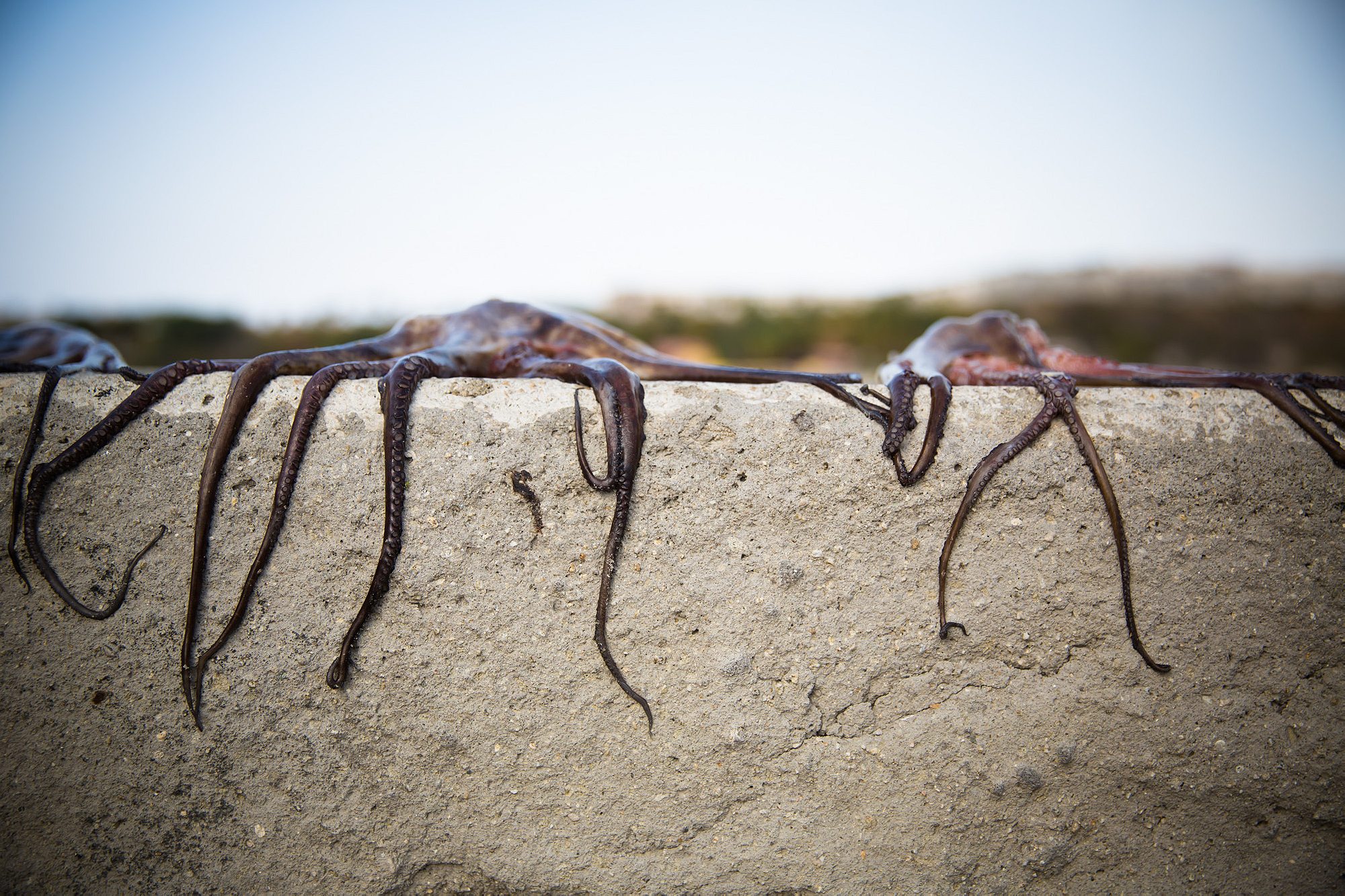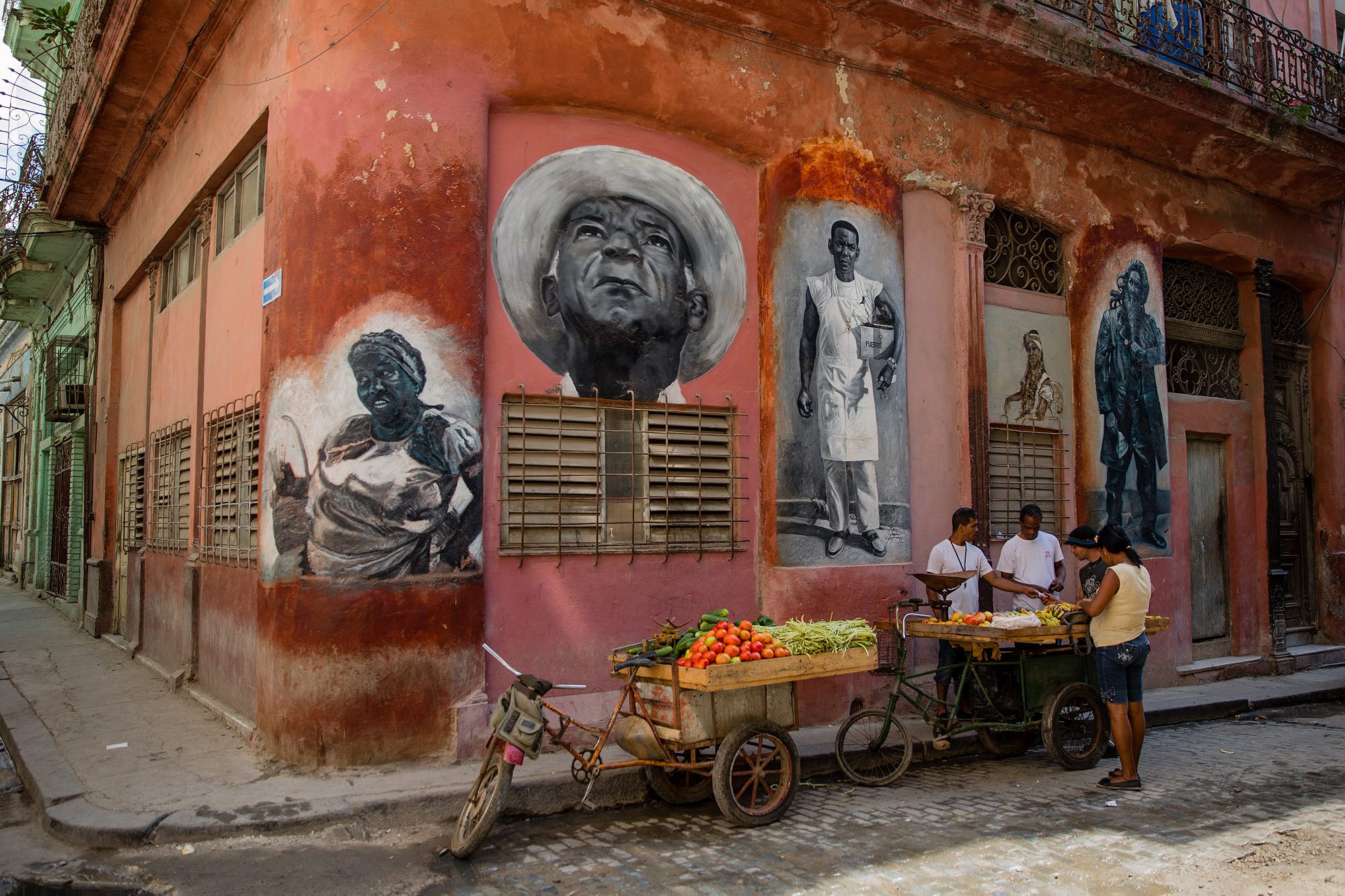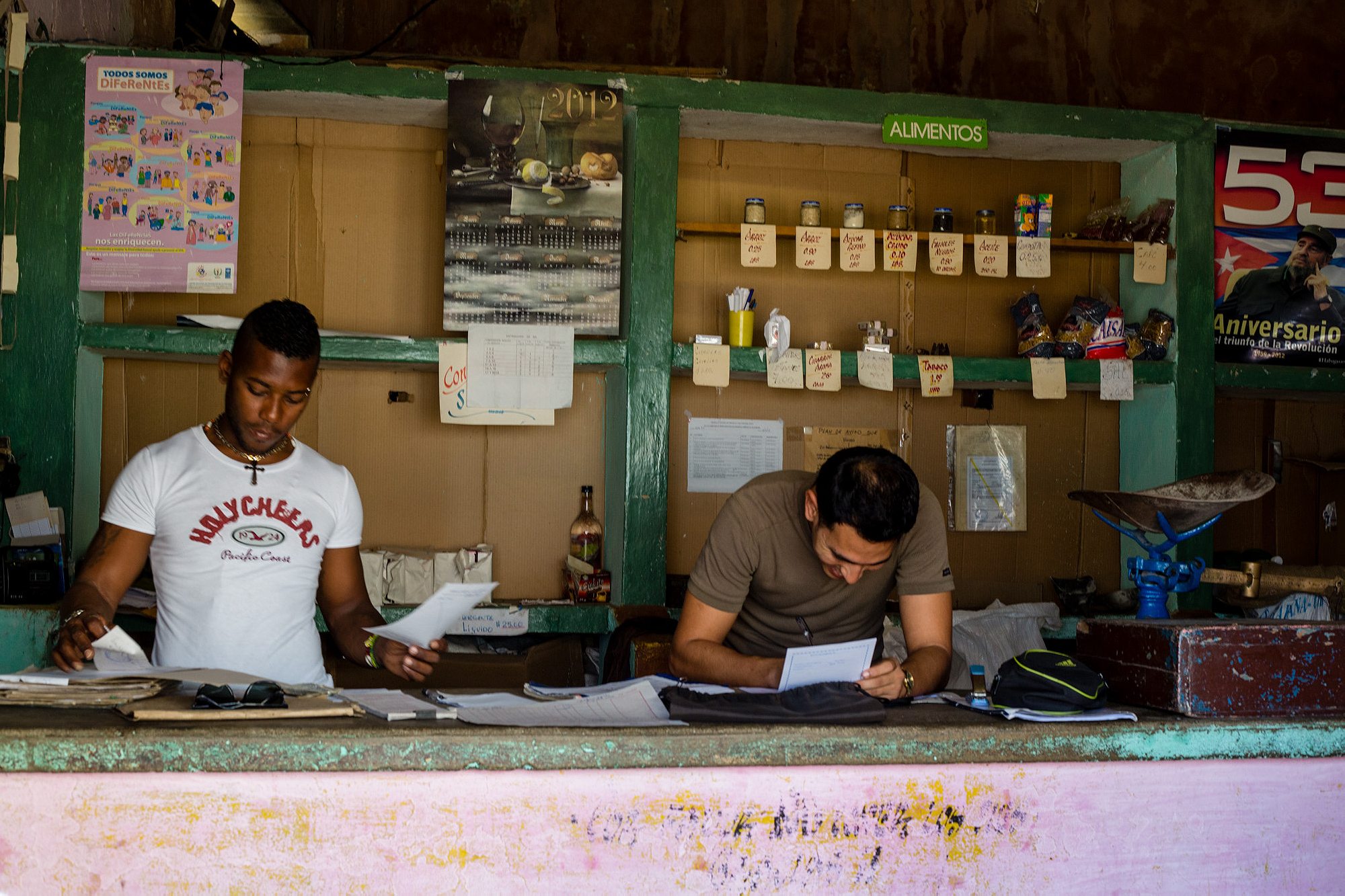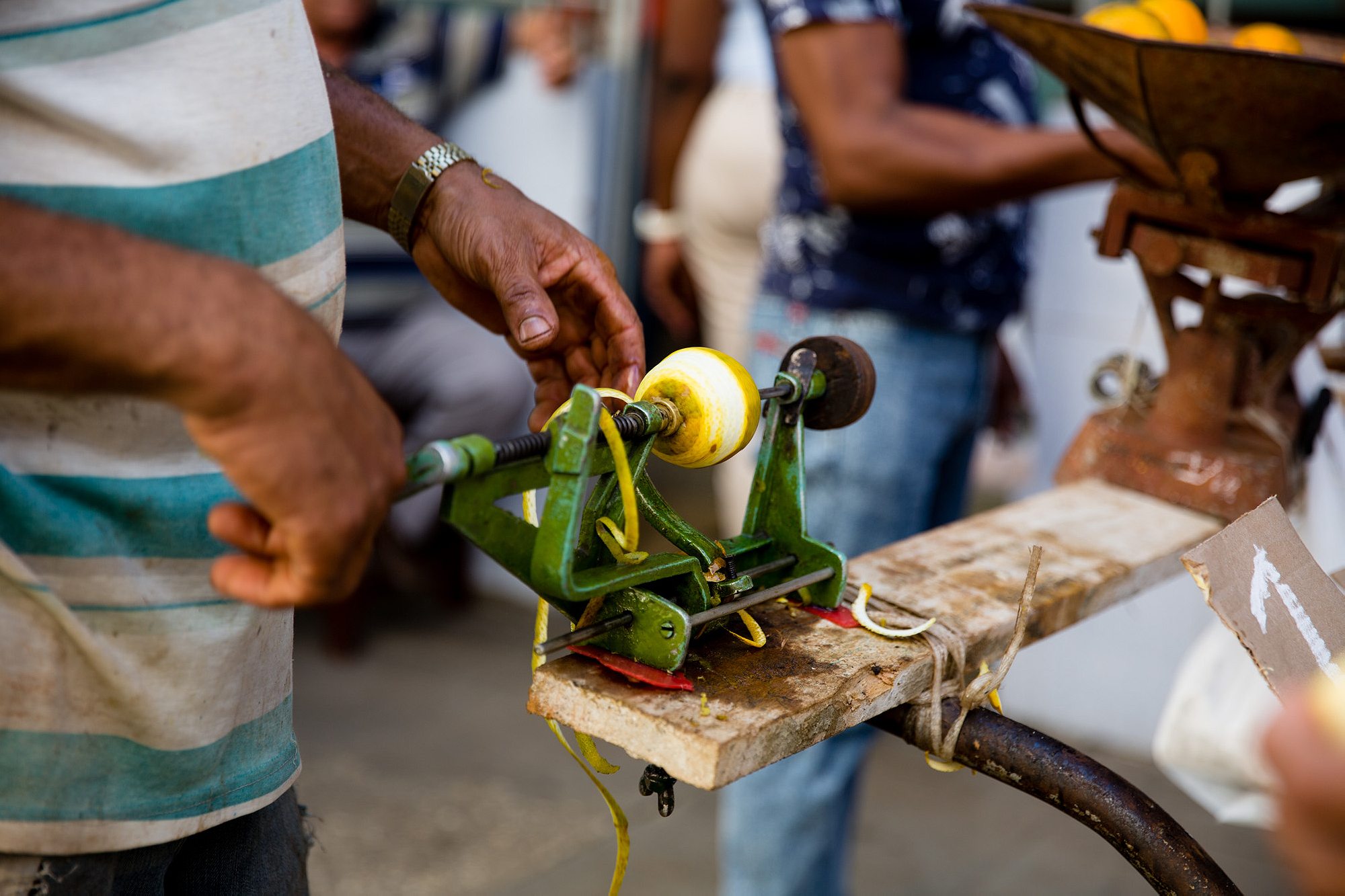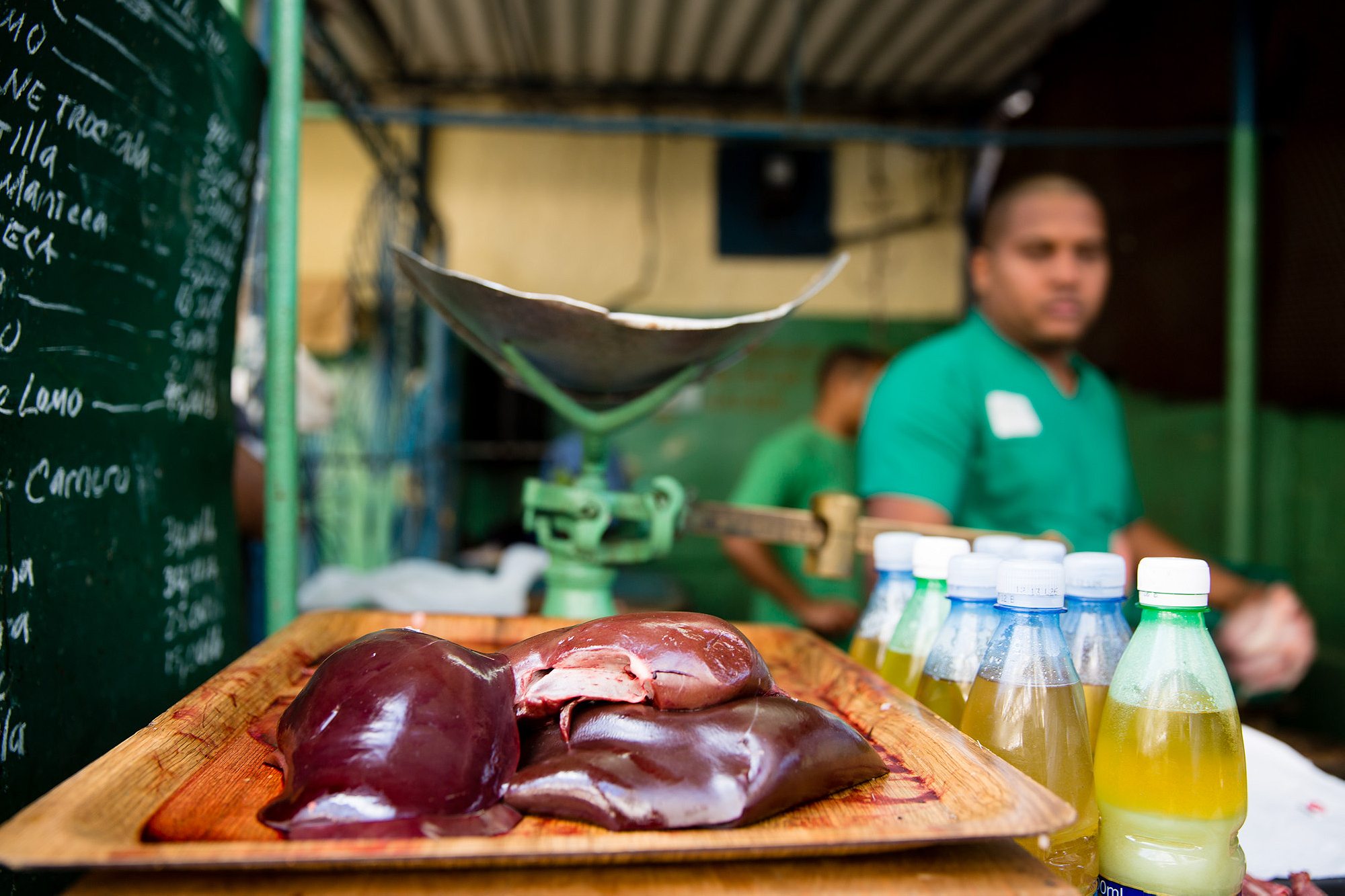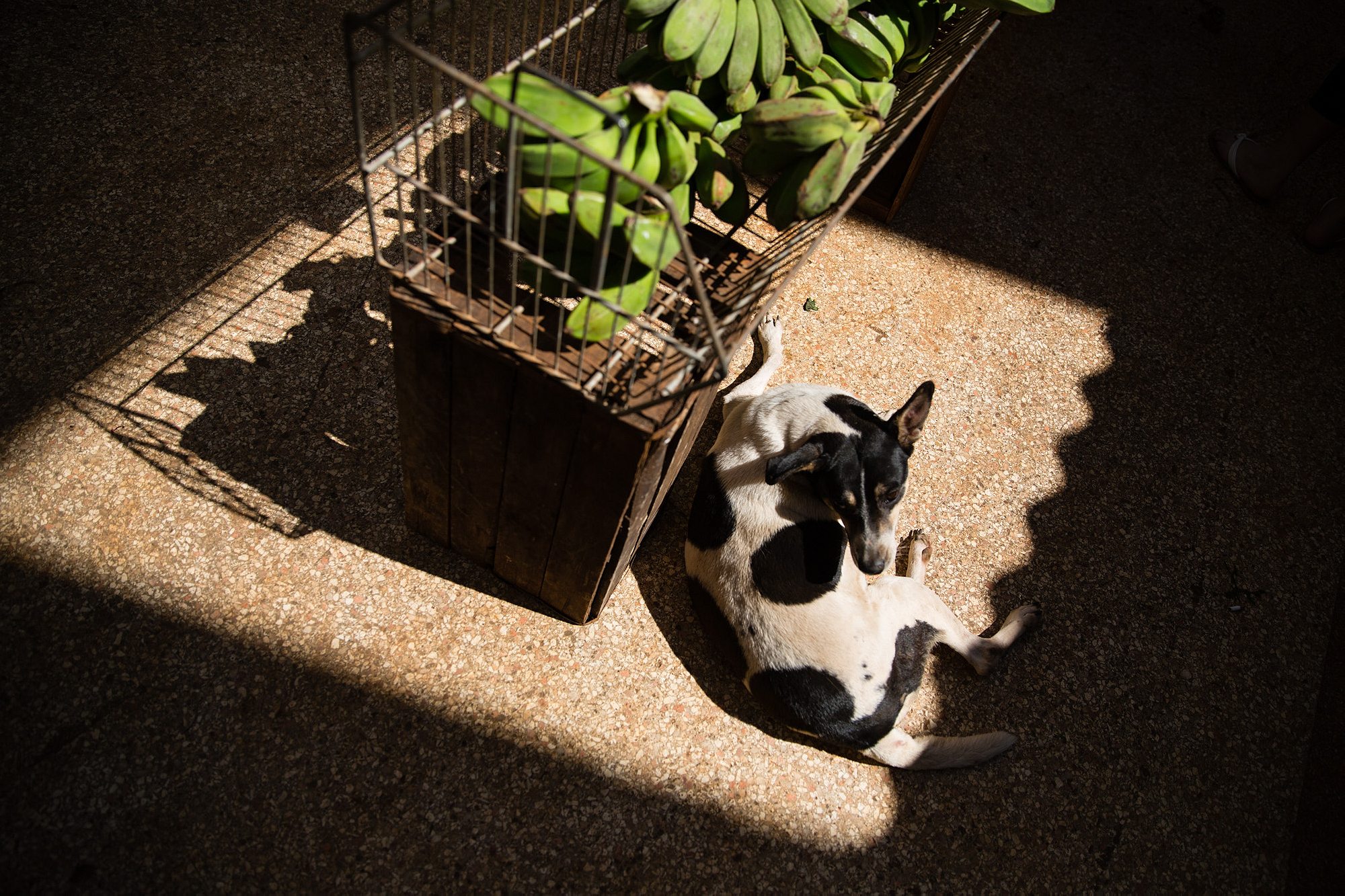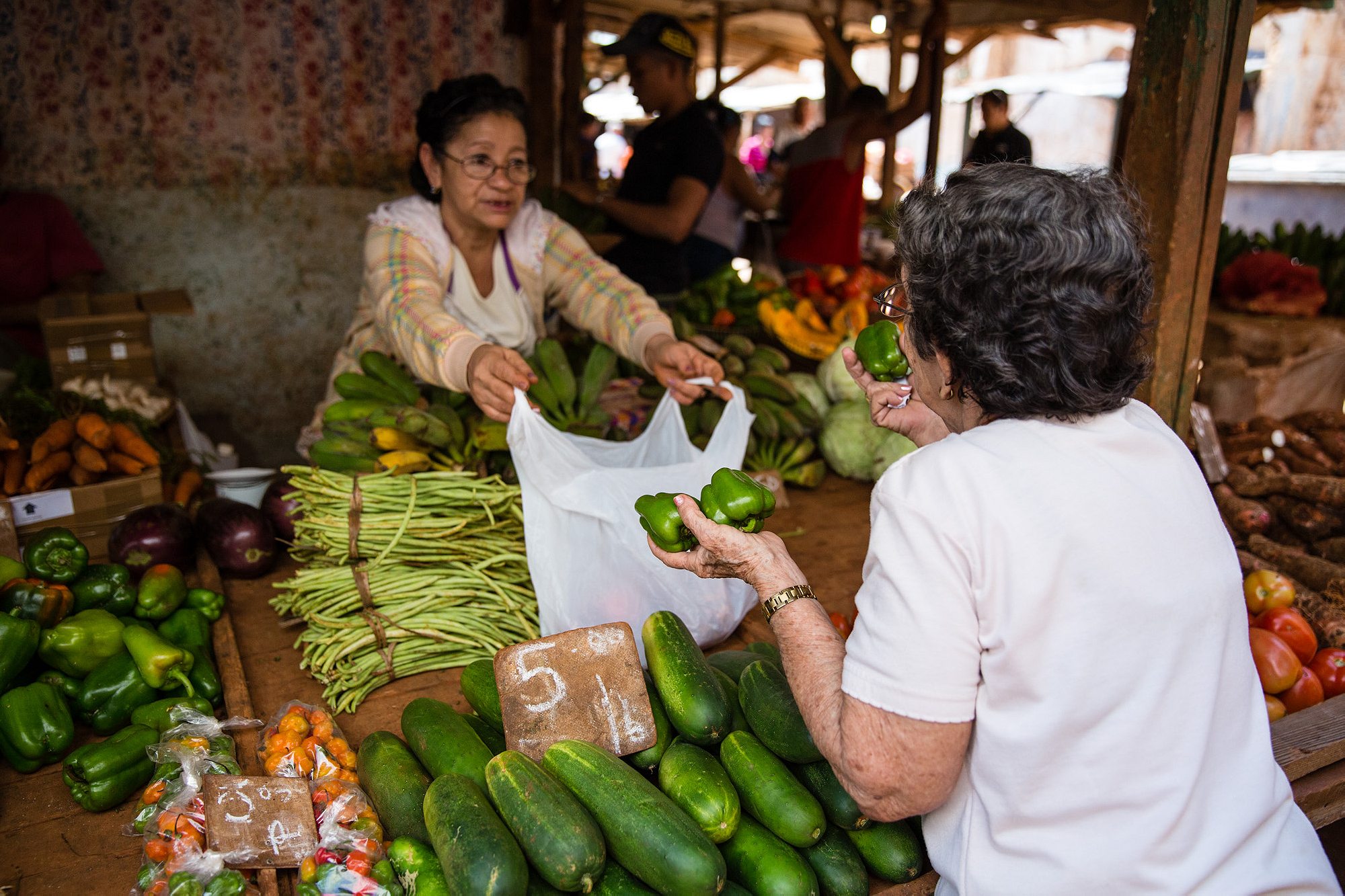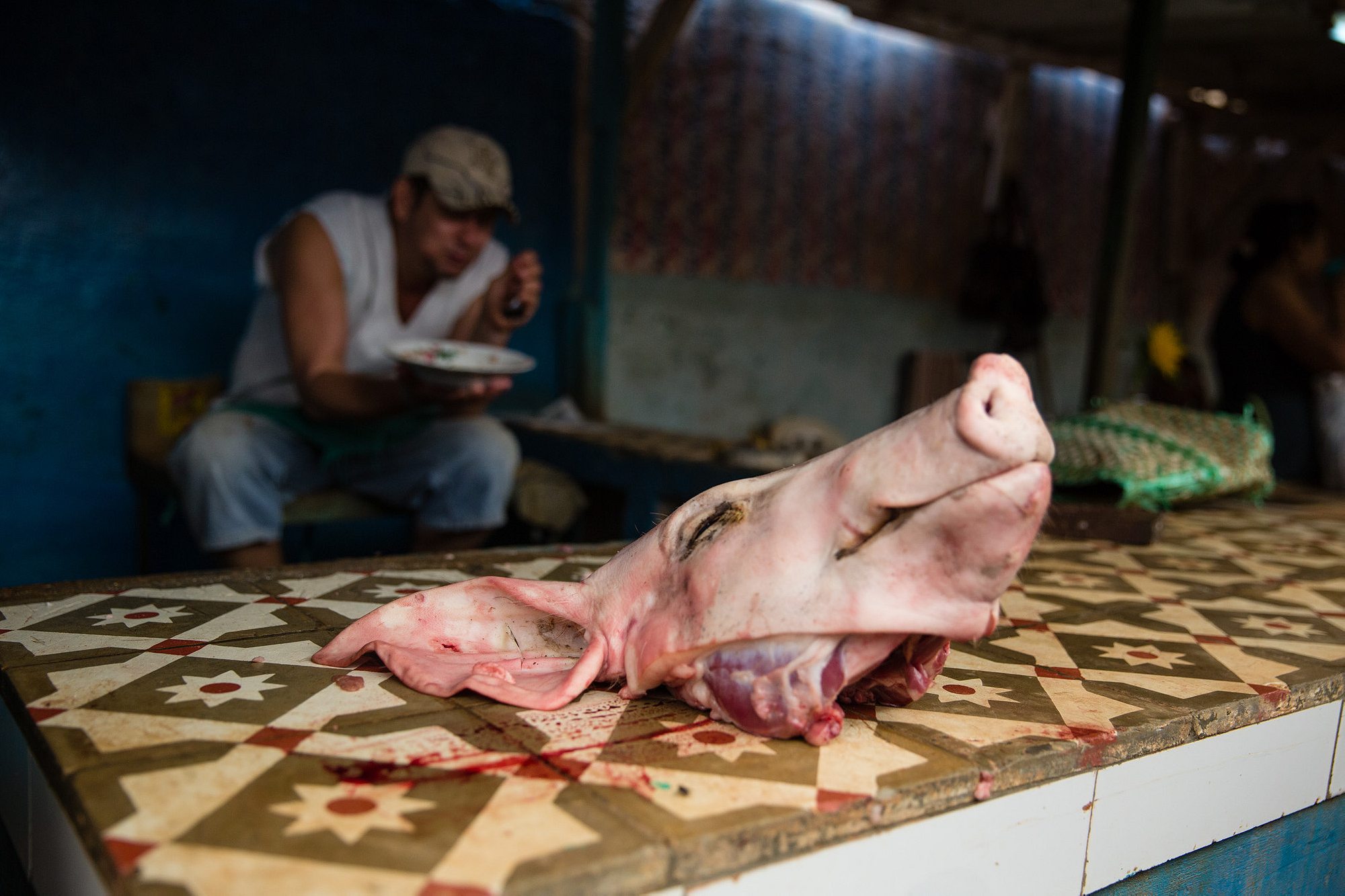Forget Jay-Z and Beyonce: the real story of Old Havana is that even there, Cubans can’t afford to buy food
Ah, the outrage generated by pictures of Jay-Z puffing a puro in Old Havana while Beyonce snaps pictures of the crumbly walls. The first picture, above, from Lisa Shires’ photoessay from those same streets seems to me worth far more contemplation.
In that moment Shires caught on camera, a young boy is trying to buy vegetables off a street vendor, only to be told that he doesn’t have enough money. All Cubans, of course, have rations that are meant to keep them from starving (plus: elderly men are given an added cigar ration). But getting anything more than rice and beans is difficult; the government stores have a late-Soviet barren quality to them. So food, the kind that gives people a bit of protein or real nutrients, is relegated to the streets and to the black market.
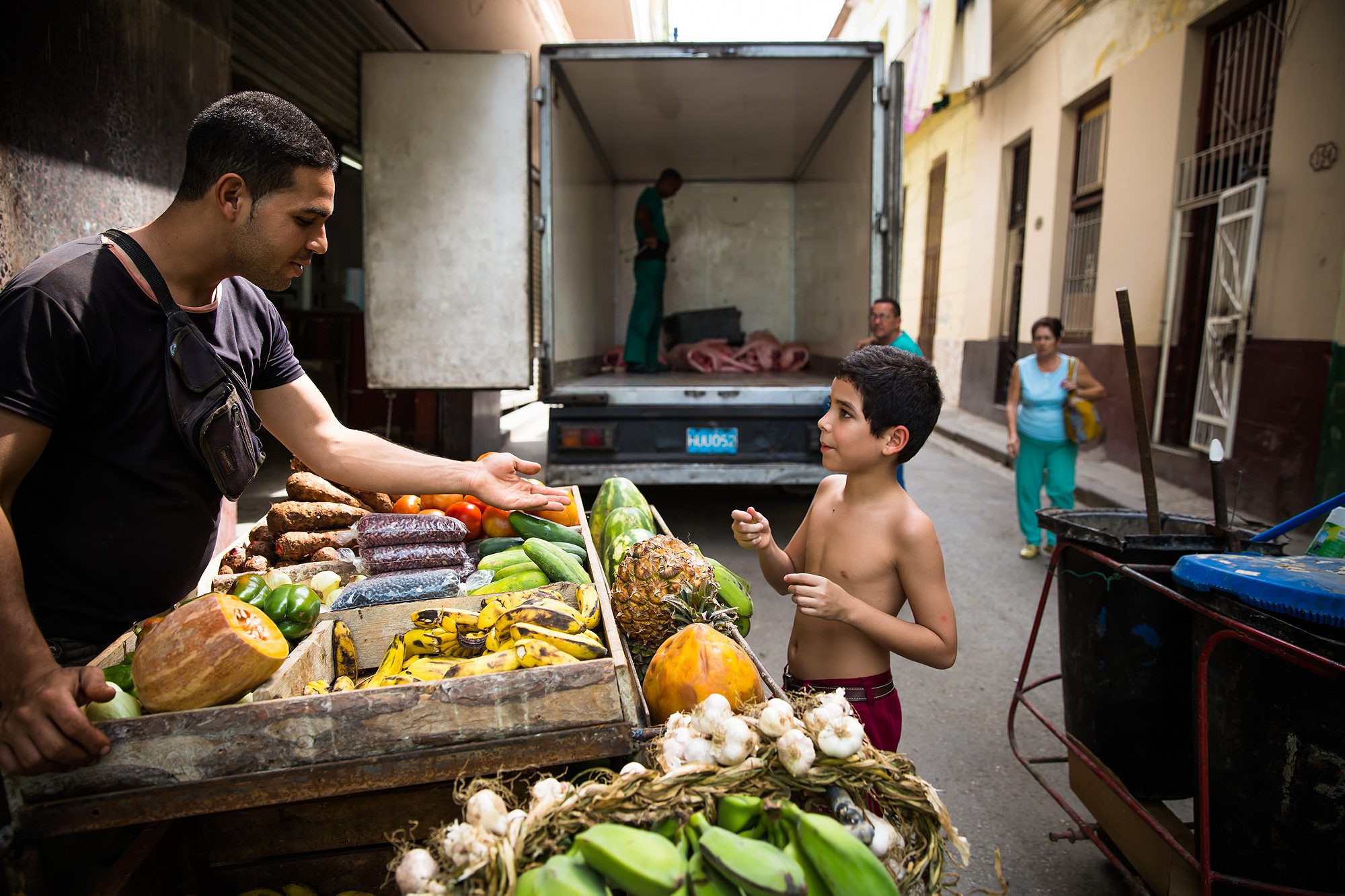
There are those who would romanticize Cuba’s moves toward food sustainability, particularly its well-publicized foray into urban organopónicos, those organic victory gardens that were supposed to solve the simmering food crisis. This recent piece from the lovable scamps at the socialist Monthly Review is well-intended but written with the enthusiasm of someone who has never had to actually rely on Cuba’s “food revolution” for dinner. It may be, as the article says, that “urban agriculture within and around Havana accounts for 60–90 percent of the produce consumed in the city.” But Shires went trawling through the rooftops and schools of all of Habana Vieja and found only one withered organopónico, at a school. And regardless of how much is grown in the semi-rural outskirts, very few people without access to U.S. dollars can afford them.
[If you have the time, read this brave op-ed in the NY Times about how blacks are increasingly excluded from this group of US currency-holders. The author of the piece lost his job at a publishing house in Cuba after it was published, a firing he blames on the blunt headline that editors at the Times put on the story.]
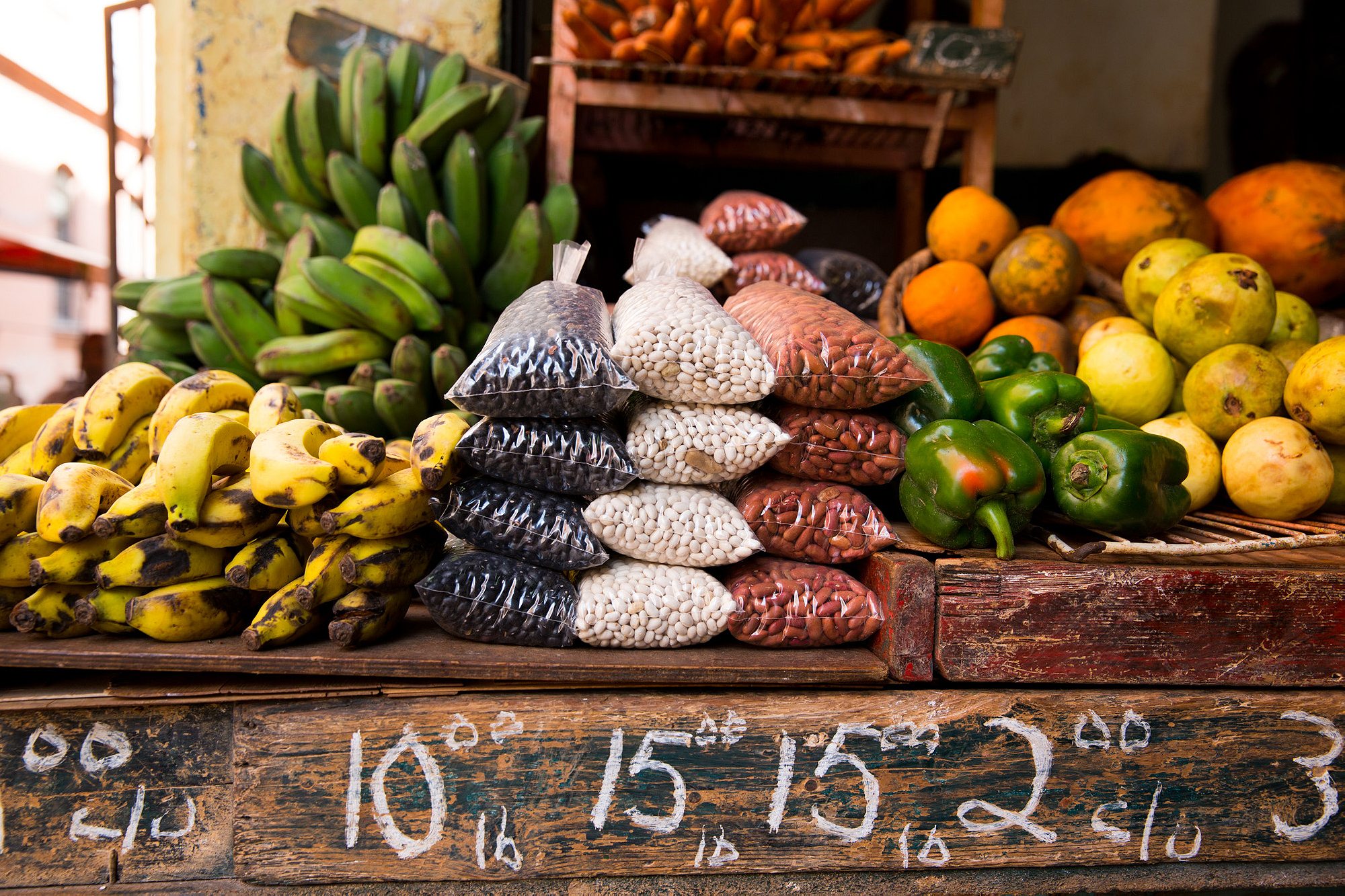
The basic movement in Cuba’s economy is this: the island is in the multi-year process of laying off up to a million public employees, because the government knows it can no longer afford to employ 80% of the total workforce, as it has in years past. The hope is that many of those laid-off workers will become dirt farmers and animal husbanders—goats, anyone?—and thereby add to the limited food supply. It would be an intricate maneuver for even the most efficient country to pull off. Cuba’s sclerotic and sometimes delusional administration hardly seems up to the task.
Until they get it right, the black market will continue to dominate, and regular Cubans won’t be able to eat well. And that, not rap-agent-moguls strolling Habana Vieja in fedoras, is actually worthy of outrage. —Nathan Thornburgh
—
Lisa Shires is a Baltimore-based photographer. Check out her work here, or follow her on Twitter

